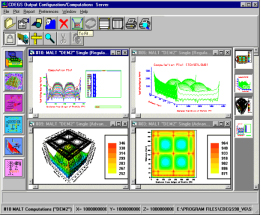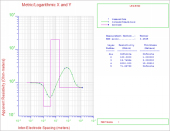Industrial Earthing System Designing

Earthing System - the most important part of an electrical system
When you build a new building, the foundations are the most important part. If you have a poor foundation, many issues will occur in the future.
Electrical systems are no different. Your earthing is the most important part of an electrical installation. It is also the root of many power quality and safety issues. DEW can design your earthing system from a green site to an existing building as per IEEE-80, IEEE-142 & IS-3043 standards.
An effective earthing system is critical to the safety of every electrical installation. Every building, equipment, power plant, substation facility included in electricity require earth grounding, either directly or through grounding system.
- Smashing Podcast Episode 11 With
- Height And Width On Images Is
- Avoid Keyboard Event-Related Bugs
- Eduardo Bouças: What Is Sourcebit
- Important Again Sourcebit
- Introducing Alpine Tiny Javaest
CDEGS - RESAP | Multilayer Soil Resistivity Analysis
Soil modelling is one of the most crucial aspects in electrical earthing system design and safety analysis. Soil resistivity modeling takes the guesswork out of electrical earthing design. In general, the soil resistivity changes both in horizontal and vertical direction. The multilayer soil model is often the most suitable for earthing system analysis. The number of required layers is in general site-dependent, the simplistic double layer soil model is adequate only in about the 20% of cases while in the remaining 80% of cases a model with three or more layers is required.
 Correctly interpreted soil structures are essential for the analysis of earthing systems. A more accurate representation of the actual soil structure can be obtained by use of CDEGS-RESAP engineering software. The apparent resistance (V/I) data values were entered as input to the RESAP to determine equivalent horizontally multi-layered soils based on the site measurements. RESAP compares field data to apparent resistivities produced by different soil models, and automatically determines a soil structure yielding a closely matching electric surface response.
Correctly interpreted soil structures are essential for the analysis of earthing systems. A more accurate representation of the actual soil structure can be obtained by use of CDEGS-RESAP engineering software. The apparent resistance (V/I) data values were entered as input to the RESAP to determine equivalent horizontally multi-layered soils based on the site measurements. RESAP compares field data to apparent resistivities produced by different soil models, and automatically determines a soil structure yielding a closely matching electric surface response.
The end results are bespoke multilayer model of earth resistivity, which is based on EDS extensive experience of earthing system designing and analysis.
